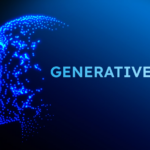
Artificial Intelligence (AI) and cloud computing are two of the most transformative technologies of our time. Individually powerful, their integration is reshaping the digital landscape—powering smarter applications, automating workflows, and delivering unprecedented agility and insights to businesses.
In this blog, let’s explore how AI and the cloud are converging, why it matters, and how it’s impacting businesses across industries.
What Is AI in the Cloud?
AI in the cloud refers to the deployment and use of AI-powered capabilities (like machine learning, natural language processing, and predictive analytics) via cloud platforms such as AWS, Azure, Google Cloud, and others. Rather than requiring heavy on-premise infrastructure, businesses can now access sophisticated AI tools on-demand, scaling as needed.
Why AI in the Cloud Matters
The synergy between AI and cloud computing brings multiple strategic benefits:
- Scalability: Train and deploy AI models at scale without worrying about infrastructure limits.
- Cost Efficiency: Pay-as-you-go models reduce upfront capital expenses, especially for AI projects requiring intensive compute resources.
- Speed & Agility: Cloud-native AI services accelerate model development, testing, and deployment.
- Access to Advanced Tools: Leverage pre-built models, APIs, and frameworks (e.g., Google Vertex AI, AWS SageMaker, Azure OpenAI).
- Automation at Scale: Use AI to automate complex processes—from customer service to fraud detection—across vast distributed environments.
Key Use Cases
Here’s how organizations are using AI in the cloud to gain a competitive edge:
1. Smart Infrastructure Management
Cloud platforms infused with AI help monitor resource usage, predict outages, and auto-scale infrastructure, making operations highly efficient.
2. Enhanced Customer Experience
AI chatbots, recommendation engines, and voice assistants hosted in the cloud offer personalized and 24/7 customer engagement.
3. Predictive Analytics
Cloud-based AI helps organizations analyze massive datasets in real time to forecast trends, customer behavior, and risks.
4. DevOps Automation
AI-enhanced DevOps pipelines in the cloud can detect anomalies, automate testing, optimize CI/CD workflows, and even suggest code improvements.
5. Cybersecurity
AI models running in the cloud identify threats, detect patterns of fraud, and trigger proactive security measures at scale.
How It Works
AI in the cloud is typically powered through:
- APIs: Ready-to-use AI services for vision, language, and decision-making.
- ML Platforms: Full-fledged machine learning environments like Azure Machine Learning or AWS SageMaker.
- Custom AI Pipelines: Users can build, train, and deploy models using open-source frameworks like TensorFlow or PyTorch hosted on cloud VMs or containers.
- Edge AI: With advancements in edge computing, cloud-trained AI models are now deployed closer to devices, enabling low-latency decision-making.
Challenges to Consider
While the benefits are immense, integrating AI in the cloud isn’t without challenges:
- Data Privacy & Compliance: Handling sensitive data in the cloud must align with regulations like GDPR or HIPAA.
- Skills Gap: Leveraging cloud-based AI requires skilled personnel in AI, ML, and cloud architecture.
- Cost Management: Without proper governance, large-scale AI workloads can escalate cloud costs.
Final Thoughts
The fusion of AI and cloud computing is not just a trend—it’s the new foundation for digital transformation. As AI continues to evolve, cloud platforms will serve as the launchpad for innovations that were once thought impossible. Whether you’re building smart apps, automating IT operations, or unlocking insights from big data—AI in the cloud is the key.
Now is the time to explore how your organization can ride the AI-cloud wave to innovate, scale, and lead.
Follow us for more Updates














